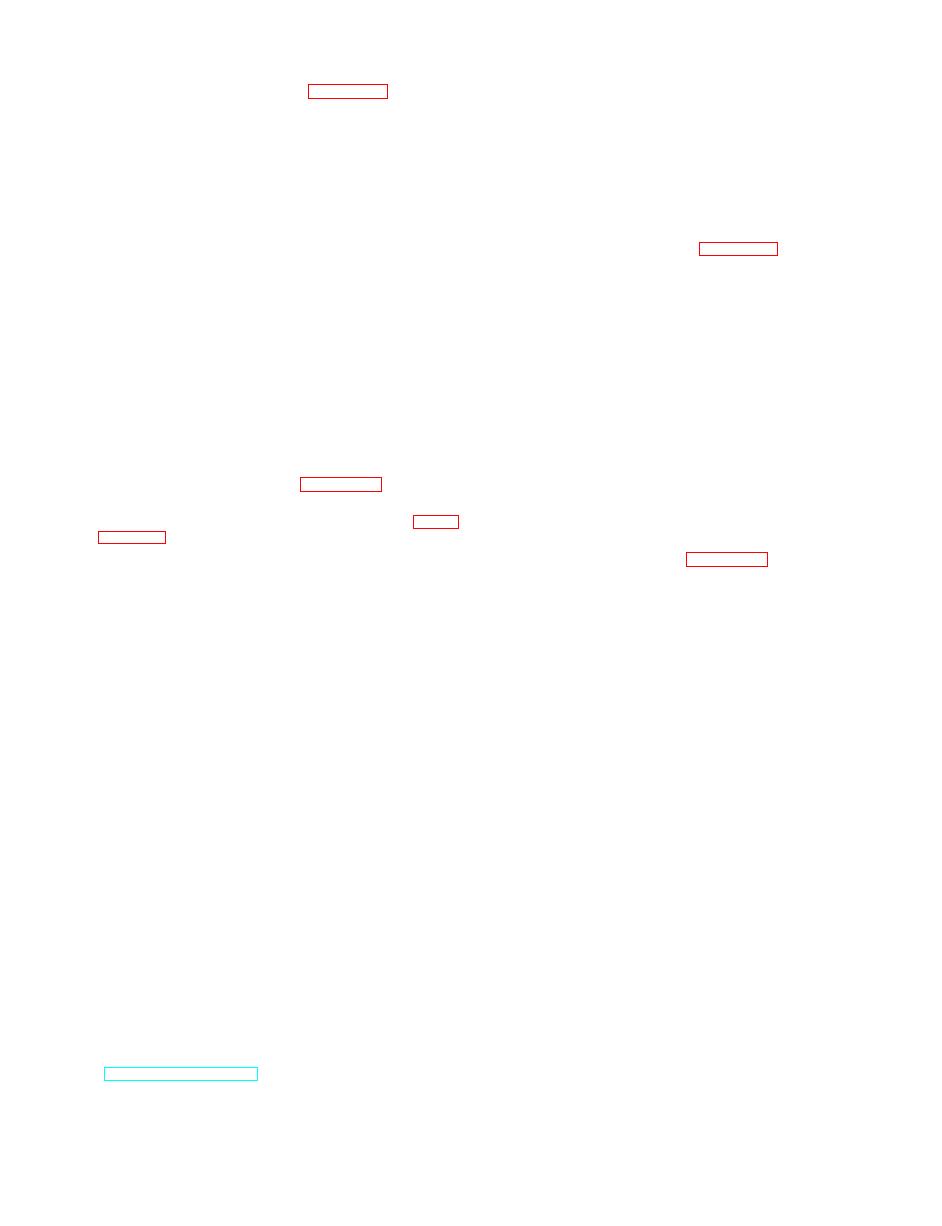 |
|||
|
|
|||
|
|
|||
| ||||||||||
|
|
 TM 10-3930-242-34
5-16. Three-Piston Cylinder
a s s e m b l e the steering cylinders.
a. Removal.
(1) Tag, disconnect, and cap hydraulic lines.
NOTE
(2) Disconnect the cylinder (rod end ball
The Army model 200 and Army model 222 cylin-
joint), from the intermediate link; do not change
ders are of identical construction and have identi-
cal components. The cylinders used on the Army
t h e ball joint adjustment (length) on the cylin-
model 202 have slightly different internal compo-
der rod unless replacement of the ball joint as-
n e n t s , but maintenance procedures are similar.
s e m b l y is required.
The steering cylinders for the Army model 202 are
illustrated in TM 10-3930-242-34P/2.
a s s e m b l e the three-position cylinder.
c. Cleaning and Inspection.
NOTE
(1) Clean the cylinder and metal compo-
The Army model 200 and Army model 222 cylin-
nents thoroughly, using solvent P-D-680, or
ders are of identical construction and have identi-
cal components. The cylinders used on the Army
equal.
model 202 have slightly different internal compo-
( 2 ) Inspect rod end bushings for excessive
n e n t s , but maintenance procedures are similar.
wear.
The three-position cylinders for the Army model
(3) Inspect extension rod for smoothness
202 are illustrated in TM 10-3930-242-34P/2.
a n d insure rod is straight.
(4) Inspect mounting hardware for cracks,
c. Cleaning and Inspection.
breaks, damage, and excessive wear. Replace all
(1) Clean the cylinder and all parts
d e f e c t i v e parts.
t h o r o u g h l y , using solvent, P-D-680, or equal.
(2) Inspect all parts for wear or damage,
s e m b l e the steering cylinder. Tighten rod end
(3) Inspect the cylinder body, piston rod,
n u t in accordance with specifications in parag-
a n d piston for scored areas and damage. Re-
raph 1-7b (8).
p l a c e all defective parts.
e. Test.
(1) Packing drag test.
s e m b l e the three-position cylinder.
(a) With cylinder horizontal, fill rod end
e. Test.
of cylinder with oil.
(1) Packing drag test.
(b) Open head end part of the piston to the
(a) With the cylinder horizontal, fill the
atmosphere.
rod end of the cylinder with oil.
(c) W i t h r o d e n d u n d e r n o l o a d e x c e p t
(b) Open the head end part of the piston to
n o r m a l seal and wiper drag, pressurize the rod
t h e atmosphere.
end of the cylinder and record the maximum
(c) W i t h r o d e n d u n d e r n o l o a d e x c e p t
p r e s s u r e reached before the piston moves.
n o r m a l seal and wiper drag, pressurize the rod
(b) Repeat the above for the head end of
end of the cylinder and record the maximum
the cylinder.
p r e s s u r e reached before the piston moves.
(e) The piston may be operated as neces-
(d) Repeat the above for the head end of
sary for wear in.
the cylinder.
(f) Piston rod will extend with maximum
(e) The piston may be operated as neces-
of 15 psi on the rod side of the piston.
sary for wear in.
(2) Piston leakage test.
(f) Piston rod will extend with maximum
( a ) Fill the cylinder with oil. Seal the rod
of 15 psi on the rod side of the piston.
e n d and load the head end of the piston to not
(2) Piston leakage test.
less than 2,000 psi and hold this pressure for 15
(a) Fill the cylinder with oil. Seal the rod
m i n u t e s . The packing gland should be tightened
end and load the head end of the piston to not
j u s t tight enough that leakage stops.
less than 2,000 psi and hold this pressure for 15
(b) Measure and record the travel of the
minutes. The packing gland should be tightened
p i s t o n during the 15 minutes.
j u s t tight enough that leakage stops.
(c) R e p e a t p r o c e d u r e f o r r o d e n d o f t h e
(b) Measure and record the travel of the
cylinder.
p i s t o n during the 15 minutes.
(d) Maximum piston rod drift should not
( c ) Repeat the procedure for the rod end
exceed one inch per hour.
of the cylinder.
f. Installation. I n s t a l l t h e s t e e r i n g c y l i n d e r
(d) Maximum piston rod drift should not
(TM 10-3930-242-12).
exceed one inch per hour.
|
|
Privacy Statement - Press Release - Copyright Information. - Contact Us |